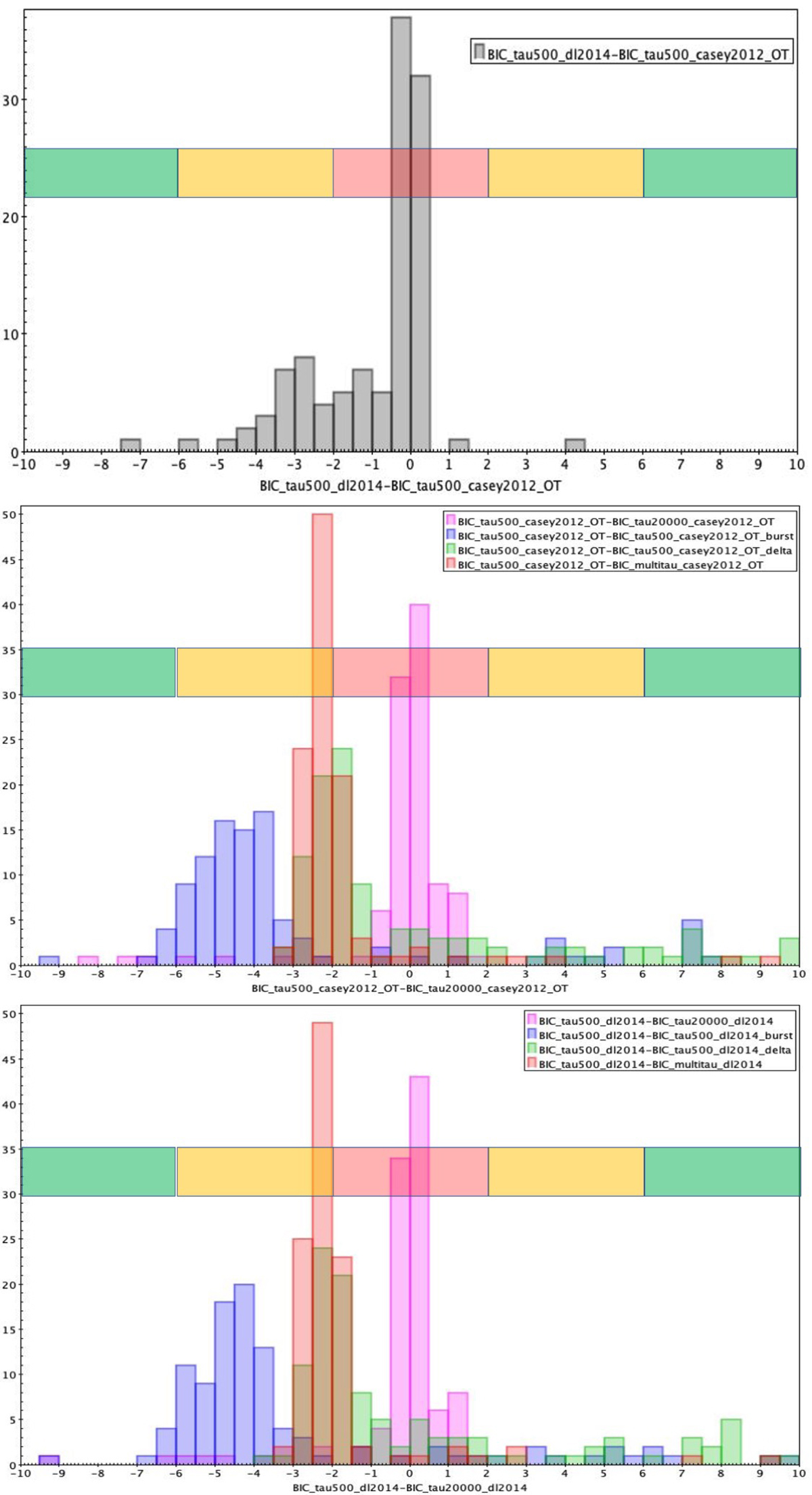Fig. 6.

Download original image
Result of the ΔBIC test on our sample of Hiz-SFGs. A delayed SFH without a burst and τmain = 500 Myr is labeled as “tau500”. With an additional burst at the end of the SFH, it is labeled as “burst”. A constant SFH without a burst and τmain = 20 Gyrs is labeled as “tau20000”. And when several τmain could be selected in the SED fitting, it is labeled as “multitau” in the legend. Top: ΔBIC test that compares the influence of the DL2014 model and the PL+OT_MBB dust emissions in building the IR template. Center: ΔBIC test on the SFH assuming the PL+OT_MBB for the IR template. Bottom: ΔBIC test on the SFH assuming the DL2014 model for the IR template. The color band allows one to interpret the results of the evidence (ΔBIC) against the model with the higher BIC: red means “faint evidence”, orange means “positive evidence”, and green mean “strong evidence”. We do not see any strong evidence that DL2014 or PL+OT_MBB are better for fitting the data. An SFH that includes a burst is positively ruled out, while a delayed SFH with τ = 500 Myr is weekly favored.
Current usage metrics show cumulative count of Article Views (full-text article views including HTML views, PDF and ePub downloads, according to the available data) and Abstracts Views on Vision4Press platform.
Data correspond to usage on the plateform after 2015. The current usage metrics is available 48-96 hours after online publication and is updated daily on week days.
Initial download of the metrics may take a while.


